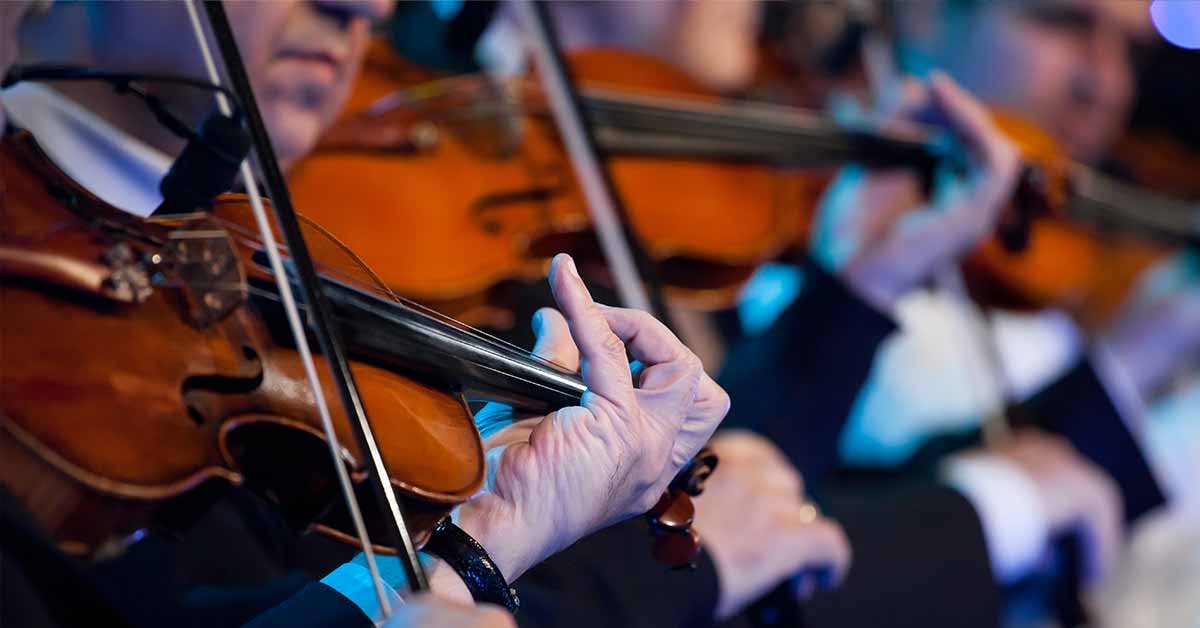Any time dress codes for orchestras come up, a can of worms is opened. Today, let’s talk about the tuxedo!
Those in favor of the tux like its tradition, its class, and its look. Those who aren’t in favor dislike the lack of comfort, the stuffiness, and the stodgy tradition.
It’s safe to say that most people don’t know the history of the tux, so here’s a brief look:
The tuxedo was born in England about 1860 at the request of the Prince of Wales, who later became King Edward VII. As the story goes, the prince was annoyed with the formality and lack of comfort of the traditional evening attire: white tie, white vest, and tailcoat. He requested his tailor to create something more comfortable. A blue silk tailless evening coat with matching pants was created; it wasn’t called a tuxedo (yet), it was called a smoking jacket.
American coffee tycoon James Brown Potter was visiting the prince and saw this more casual attire during dinner. Potter took the idea back to his hometown, the affluent community of Tuxedo Park in New York.
Sporting this new look at the 1886 Tuxedo Club Autumn Ball, Hudson Valley’s social elite copied this look. Wealthy men had their tailors cut their coat tails and started wearing the newer, more stylish, comfortable jackets.
Soon, this style began to appear in the box seats of the Metropolitan Opera. The “comfortable and casual” smoking jacket was now expected and accepted at formal events. No longer called a smoking jacket, it was formally called a tuxedo, a nod to where it became popular, Tuxedo Park.
Speaking of the gated community of Tuxedo Park, it’s worth noting that one of the main architects and first residents of that community was Bruce Price. Why is this important? Well, Bruce is the father of Emily Post, who is the etiquette expert after whom we still base much of our modern good manners.
So, to tie this up (stay with me, this will all make sense in a minute), I would like to share one of Emily Post’s etiquette principles.
According to the etiquette writings of Emily Post, it is not necessarily knowing which fork or spoon to use or even when to curtsy or bow. Etiquette is, at its core, the art of making those around you feel comfortable and welcome.
Examples of this are when you have guests over for dinner you make sure the food is something they would enjoy, you aim to create a welcoming atmosphere and good conversation. You make your guests feel special as you all enjoy the evening.
When we think of inviting guests for a party, we consciously or subconsciously try to match what we wear. Sometimes parties will specify “formal” or “beach wear” and people feel comfortable knowing they will fit in. After all, it is awkward to show up to a formal event in jeans or a casual event in a gown. Awkward for most, anyway.
So, here’s the question: Do we really need to be in tuxes and tails when audiences continually show they are more comfortable in suits and dressy-casual? It is time to adjust and reflect what our guests are comfortable wearing. Everything an orchestra wears telegraphs an image and emotion. Let us tell our audiences we are not stuffy time-capsules honoring a time that is not relatable to most.
Surely, we can have formal, special dress up evenings where gowns and tuxes can be enjoyed. But for now, it’s the time to find our 21st dressy casual equivalent of what King Edward VII found for his time.
Many orchestras are already doing this: Black jacket, black shirt, no tie. It’s sharp and matches better what the audience wearing.
While the tux is an easy uniform for many groups, it virtually takes no extra work or money to shift the look to reflect on comfort, relevancy, and 21st century style.
P.S. This goes for white tie/tail which originate from military riding jackets. Why the tails? To fit over the horse of course. Why the vest? The vest was needed because was no central heat back in the heyday of tails. These coats and all the accoutrements were to keep the man warm. Let’s lose this stuffy look, too!










